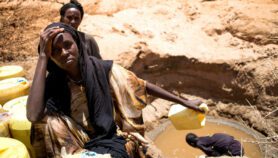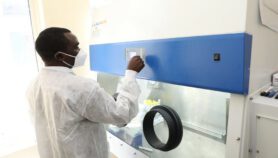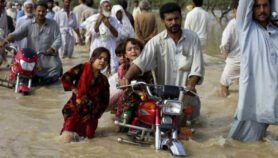By: Joanna Carpenter
Send to a friend
The details you provide on this page will not be used to send unsolicited email, and will not be sold to a 3rd party. See privacy policy.
More research and sharing of best practice could minimise the environmental impacts of aquaculture, and maximise its potential to alleviate food insecurity, according to a report by the WorldFish Center and the non-profit organisation Conservation International.
Almost half of all seafood consumed originates from aquaculture — the farming of aquatic animals and plants in coastal and inland areas — according to the report ‘Blue Frontiers: Managing the environmental costs of aquaculture’, launched last week (14 June).
Production reached nearly 66 million tonnes in 2008, and the report projects that this could increase to up to 110 million tonnes by 2030. "The growth in farmed fish supply has significantly outpaced growth in world population," the report said.
The report is the first global assessment of the trends and impacts of cultivated seafood.
It identified measuring the environmental impact of aquaculture as a top priority for research, particularly in China and the rest of Asia.
Stephen Hall, director-general of the WorldFish Center, told SciDev.Net that Asia as a whole accounts for 91 per cent of global aquaculture production. "That’s where support and investment [in research] … will have the biggest payoff."
The report said that, in terms of ecological efficiency and environmental impact, aquaculture "[has] clear benefits over other forms of animal source food production for human consumption.
"In view of this, where resources are stretched, the relative benefits of policies that promote fish farming over other forms of livestock production should be considered."
But Hall said that there are "huge efficiency gaps" that research needs to address. "The environmental impacts per tonne of fish produced, for the same species group, varies substantially across countries."
He added: "[We need] a better handle on where supply and demand for fish and fish products is going to go in the next 10–15 years. [We want] to serve not only the demands of those who have plenty to eat but also the needs of those who don’t."
Governments in Africa and Asia need to stimulate private sector investment to reach this goal, said the report.
Lionel Dabbadie, visiting assistant professor in the Aquaculture and Aquatic Resources Management Programme of the Asia Institute of Technology in Thailand, said: "The report … [provides] interesting directions for globally optimising fish farming in the future. The challenge will be in scaling these global results into local actions."
The report was launched at the ASEAN–SEAFDEC (Association of Southeast Asian Nations–Southeast Asian Fisheries Development Center) conference on ‘Sustainable Fisheries for Food Security Towards 2020’ in Bangkok, Thailand.
Link to full report [5.95MB]













